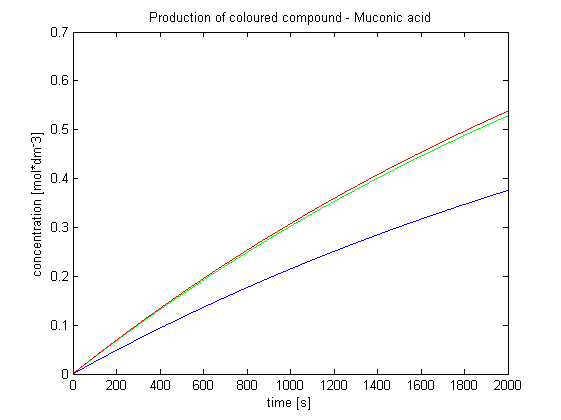Team:Imperial College London/Modelling
From 2010.igem.org
m (Adding sentence) |
m |
||
| Line 118: | Line 118: | ||
<b style="font-size:12px">Surface Protein Model</b><br/> | <b style="font-size:12px">Surface Protein Model</b><br/> | ||
Goals: | Goals: | ||
| - | <ol><p>The aim of this model is to determine the concentration of Schistosoma elastase or TEV protease that should be added to bacteria to trigger the response.</p> | + | <ol><p>The aim of this model is to determine the concentration of Schistosoma elastase or TEV protease that should be added to bacteria to trigger the response. That was supposed to allow us to correlate required concentration for the activation with the concentration of Schistosoma elastase in the lake.<</p> |
<p>It is also attempted to model how long it takes for the protease or elastase to cleave enough peptides.</p> | <p>It is also attempted to model how long it takes for the protease or elastase to cleave enough peptides.</p> | ||
</ol> | </ol> | ||
Revision as of 21:01, 13 October 2010
| Temporary sub-menu: Dry Lab Diary; Surface Protein Model; Output Amplification Model;Wet-Dry Lab Interaction |
| Introduction to modelling |
In the process of designing our construct two major questions arose which could be answered by computer modelling:
|
| Results & Conclusions | ||||
Output Amplification Model
|
| Quick overview of models | |||||||||
| Output Amplification Model Goals: This model was mainly developed in order to determine whether simple production is better than 1- or 2-step amplification. Further goals, contained estimation of the speed of modelled response.Elements of the system:
The aim of this model is to determine the concentration of Schistosoma elastase or TEV protease that should be added to bacteria to trigger the response. That was supposed to allow us to correlate required concentration for the activation with the concentration of Schistosoma elastase in the lake.< It is also attempted to model how long it takes for the protease or elastase to cleave enough peptides. Elements of the system:
Major assumptions:
|
 "
"








